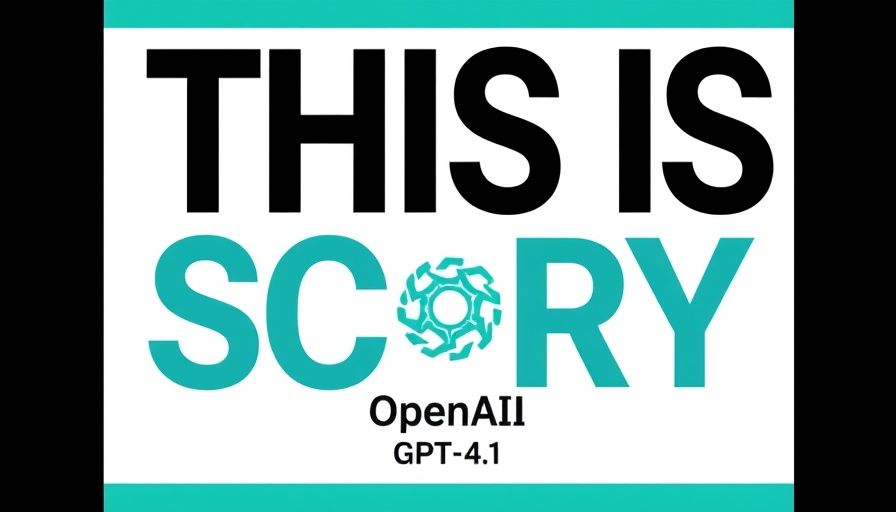
The Launch of GPT-4.1: What You Need to Know
Just hours ago, the tech community was abuzz with OpenAI's release of the GPT-4.1 update. Unlike its predecessor, GPT-4.0, which was a generalist model, GPT-4.1 is specifically tailored for coding tasks. This makes it a noteworthy advancement, especially for developers seeking to harness artificial intelligence to streamline programming tasks and improve coding efficiency. However, it's important to clarify that while these capabilities are being rolled out in the API, users of ChatGPT won't find GPT-4.1 there just yet.
In the video titled NEW OpenAI GPT 4.1 Update is INSANE (FREE!), we explore the key enhancements and implications of this revolutionary AI model for coding.
Key Features of GPT-4.1
The GPT-4.1 update introduces three new models: GPT-4.1 Mini and Nano, which exhibit impressive performance improvements in coding and instruction-following tasks. Notably, these models demonstrate a 21% better score on the SW Bench verification tests than their predecessor, GPT-4.0, indicating a significant leap in coding accuracy and efficiency.
For developers, this enhancement is essential. With a context window capable of handling up to a million tokens, tasks that once took longer can now be executed at unprecedented speeds. Conversion times are cut down dramatically, sparking interest in using this model not just for coding but also for building smarter agents—an area expected to grow exponentially in 2025.
Benchmarking the Improvements
Results from various assessment benches affirm the effectiveness of GPT-4.1, particularly in coding contexts. It scored 54.6% on the SW Bench, showcasing improvements that bolster its reliability in generating code that functions correctly with fewer corrections needed. Comparatively, the internal coding benchmarks from Windsurf—a platform that has made GPT-4.1 available at no cost for a limited time—indicate that GPT-4.1 is about 30% more efficient and 50% less likely to make repetitive errors. This level of accuracy can mean the difference between a successful launch and a project stalled by endless debugging.
Cost Implications of Using GPT-4.1
Accessing GPT-4.1 via the OpenAI API involves a cost structure based on tokens. The pricing is tiered, with the full model priced at $2 per million tokens, while its Mini and Nano versions are priced lower. These options are especially valuable for developers who often work on budget constraints, allowing them to select a version that meets their project’s needs. Moreover, the ability to monetize projects developed with these advanced models could lead to significant revenue generation opportunities.
The Future of AI in Coding
The release of GPT-4.1 is pivotal in shaping the future of AI as it pertains to coding. Experts project that as more developers adopt these technologies, we'll witness a paradigm shift toward more autonomous coding solutions, which will allow developers to focus on creating innovative features rather than wrestling with mundane coding tasks. The trend of building AI agents is expected to expand, leading to even smarter applications capable of adapting and learning in real-time.
In summary, GPT-4.1 is not just another update; it's a substantial evolution shaped by real-world development needs. As more tools and platforms like Windsurf offer access to these new models for free, developers have a unique opportunity to explore the full potential of AI in coding without significant investment.
For those eager to take advantage of GPT-4.1 and similar models, signing up for the available platforms and staying informed about future updates is critical. The landscape of coding and AI collaboration is changing rapidly, and being at the forefront of these technologies could provide significant advantages in the increasingly competitive tech industry.
 Add Row
Add Row  Add
Add 




Write A Comment